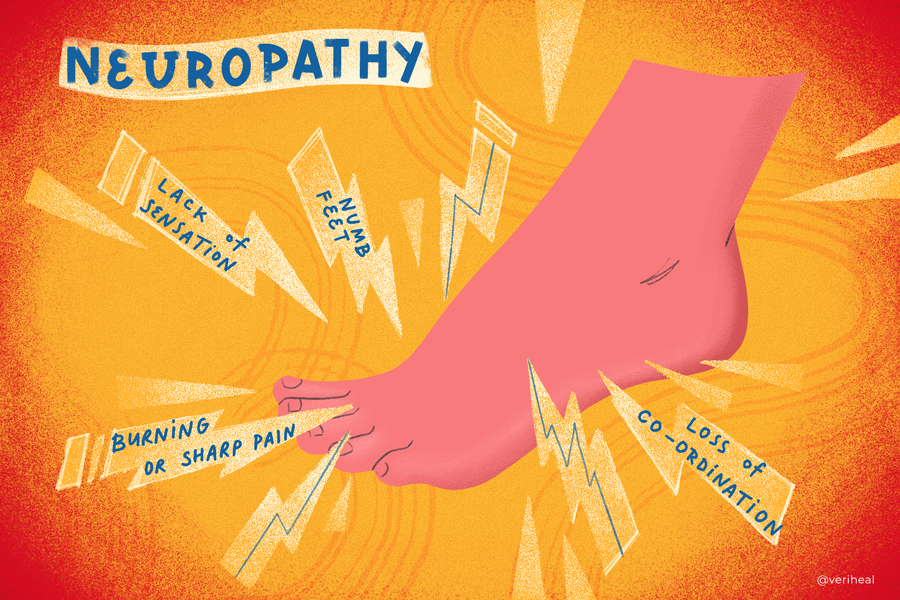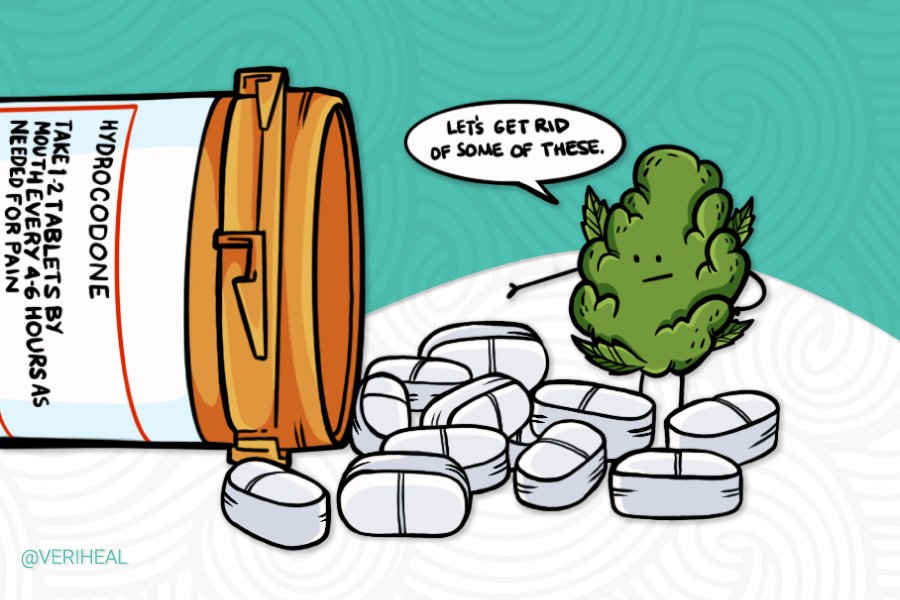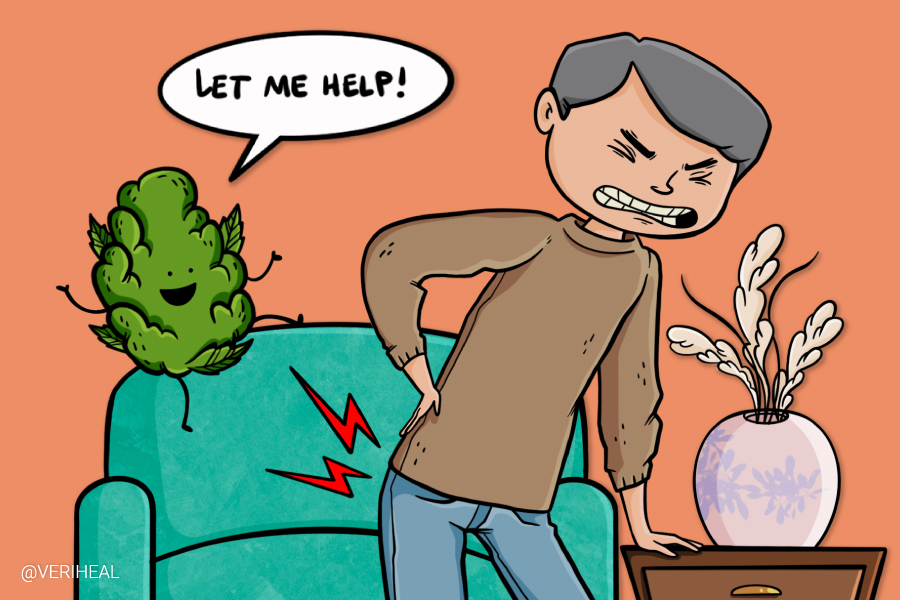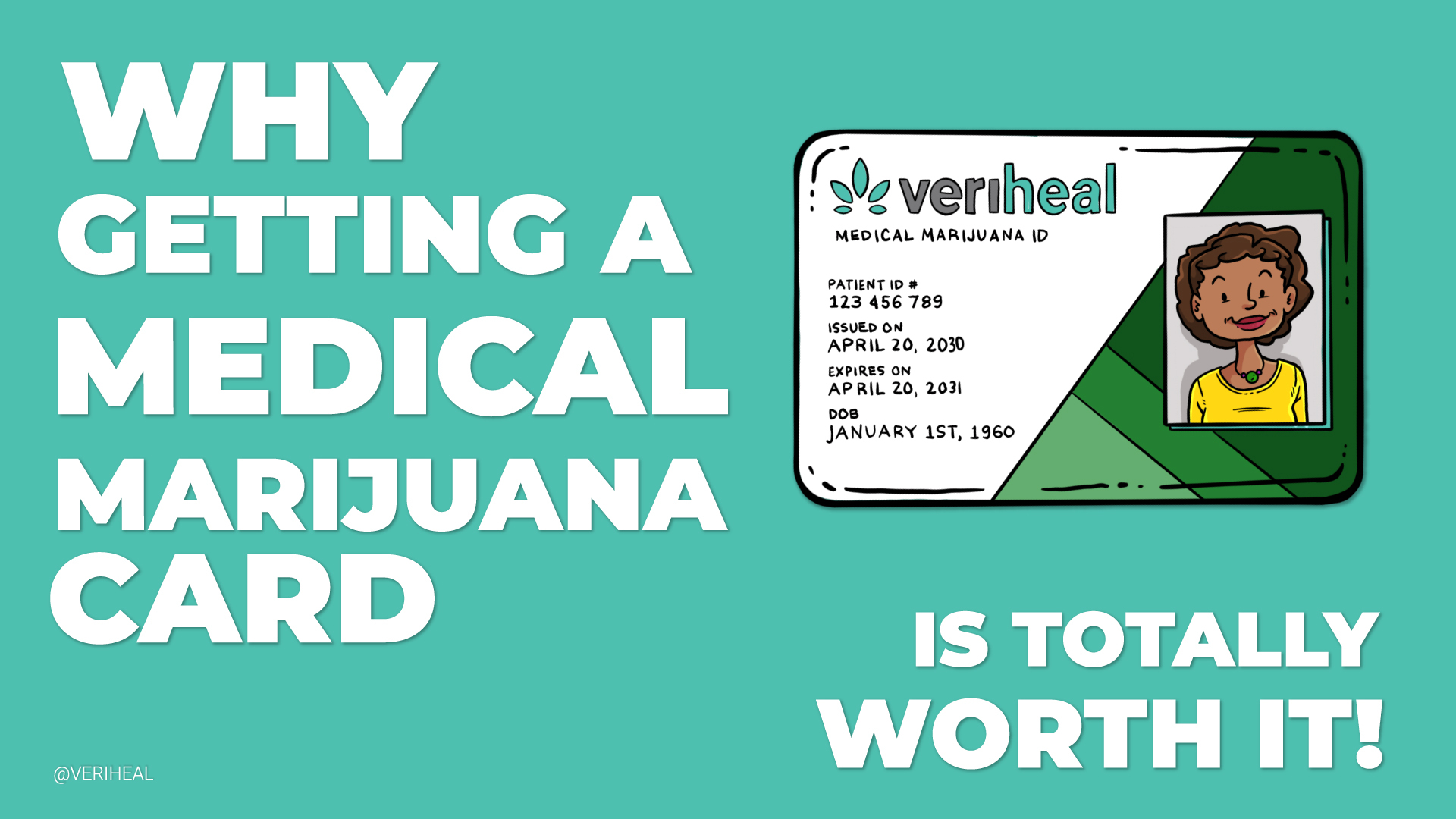Medical Marijuana for Neuropathy: Is This a Possible Option?

Medical Cannabis and Neuropathy: What You Need to Know
Medical cannabis, also known as medical marijuana, has gained attention for its potential therapeutic benefits in managing neuropathy, a condition characterized by nerve damage leading to symptoms such as pain, tingling, and numbness. Neuropathy can result from various underlying causes, including diabetes, autoimmune diseases, chemotherapy, or physical injury. Traditional treatments often include pain relievers, antidepressants, and anticonvulsants, but they may not adequately alleviate symptoms for all patients and can come with unwanted side effects.
Research suggests that cannabinoids, the active compounds in cannabis, may offer relief for neuropathic pain by interacting with the body’s endocannabinoid system, which regulates pain and mood. THC and CBD are two primary cannabinoids studied for their potential therapeutic effects. THC has pain-relieving properties, while CBD is non-psychoactive and has anti-inflammatory effects. Some studies indicate that medical cannabis, especially formulations with balanced THC and CBD ratios, can reduce neuropathic pain intensity and improve quality of life. However, further clinical trials are necessary to fully understand its efficacy, safety, and optimal dosing for neuropathy. Healthcare providers should carefully consider individual patient factors, potential risks, and state regulations before recommending medical cannabis for neuropathic conditions.
The Science Behind Medical Cannabis for Neuropathy
- Alleviating Neuropathy with Medical Cannabis
- Different Neuropathy Recommendations
- Medical Cannabis and Neuropathy: Considerations to Keep in Mind
- Understanding the Different Types of Neuropathy
- What Does the Science Say About Cannabis and Neuropathy?
- According to Pharmacist and Author Colleen Higgins
For many patients with neuropathy, many medications cannot fully address the symptoms they experience after their nerves have been damaged. Many of these patients have taken analgesic, or pain-relieving medications or anesthetics, which temporarily affect the nerves relieving the negative sensation that the patient has experienced. However, these are not preferred for neuropathies and commonly have long-term complications (11).
Today’s treatments for neuropathic pain now most commonly involve anticonvulsants, tricyclic antidepressants, and serotonin-norepinephrine reuptake inhibitors (SNRIs) (11). However, many patients still require further pain relief in addition to standard maintenance medications.
Small clinical studies have generally shown moderate relief of pain symptoms with marijuana even in patients who haven’t responded to traditional medications such as opioids or gabapentin; however, cannabis use is associated with short-term adverse effects including throat irritation, dizziness, and headache (11). The long-term safety of medical marijuana and its components are still under study. Any painful symptoms, treatment plans, and side effects should always be reported to, and managed carefully by, your own healthcare provider.
Cannabinoids, the chemical components of cannabis, including Δ9-tetrahydrocannabinol (THC) and cannabidiol (CBD), affect this condition primarily through the endocannabinoid system. The endocannabinoid system in your body consists of fat-based neurotransmitters that help modulate emotions and pain perception. When these chemicals bind with cannabinoid receptors known as CB1 receptors, it helps modulate pain in the central nervous system (CNS) and peripheral nerves, while cannabinoid 2 (CB2) receptors are found to impact the immune cells in the rest of the body. Activated CB2 receptors on immune cells cause cellular responses that can reduce pain and inflammation (11).
Alleviating Neuropathy with Medical Cannabis
Research published in the Journal of Pain supports that CB1 receptors are found in the periaqueductal gray (PAG), rostral ventromedial medulla (RVM), and the dorsal horn of the spinal cord. These locations are involved in the ability for medical marijuana to modulate acute and persistent pain signals in the CNS (27).
When CB1 and CB2 receptors are activated, they increase the amount of anandamide (AEA), a self-made neurotransmitter, in the body. This directly affects astrocytes, which make up to 60%-70% of cells in the CNS (13). This is important because AEA causes the astrocytes to secrete a protein that increases neuronal, or nerve cell growth (13) which may help with neuropathic pain, numbness, and tingling sensations.
For more information on how the endocannabinoid system works, please see our page on endocannabinoids here.
While taking cannabis for this condition, you may see the following benefits:
- Reduction in chronic pain (6)(11)(26)
- Mood Improvements (11)(24)
- Sleep improvements (11)(24)(26)
- Reduction in muscle spasticity (26)
Different Neuropathy Recommendations
It is important to note that medicinal cannabis products vary in effectiveness and how long they last depending on whether you are smoking, using creams, or taking tinctures, oils, or edibles (29). Check out our page on bioavailability for more information.
A research article from Current Pharmaceutical Biotechnology discusses the effectiveness of CBD oil for peripheral neuropathy in the legs. This placebo controlled study is promising because the patients who received the topical CBD did experience significant intense pain reduction and a reduction in sharp pain, cold pain, and sharp and itchy sensations (28).
According to a 2019 study, inhaled marijuana is most effective and cost-effective when used in combination with existing medications as a second-line or third-line treatment option; however, further research is necessary in order to explore the long-term effects of smoking cannabis as well as recommended dosages for neuropathic pain or neuralgia (21).
However, researcher Dr. Ethan Russo believes that doses of THC should be limited to a maximum of 20-30 mg a day and should be used in combination with CBD to help eliminate psychoactive and adverse effects (9). It is best to start with small doses (i.e. 5-10 mg) and gradually increase them. The correct dosage usually is the lowest that produces therapeutic benefits without adverse effects (9).
Medical Cannabis and Neuropathy: Considerations to Keep in Mind
According to a 2018 Cochrane review, patients with nerve pain or neuralgia were more likely to achieve 30% or 50% more pain relief when comparing cannabis to placebos; however, patients who used medical marijuana compared to placebo had a higher chance of adverse effects such as an increase in nervous system adverse events and psychiatric disorders (12).
Neuropathy Terms
The following are terms that are commonly used to describe this condition (25):
- Dysesthesia – a condition where light touch of the skin causes abnormal sensations of that include burning, prickling, numbness, or pain
- Hyperesthesia – heightened sensitivity of a part of the body such as the skin or any of the senses
- Hyperalgesia – heightened sensitivity to pain or enhanced pain sensitivity
- Neuritis – inflammation of the nerve from pain, loss of reflexes, and muscle shrinkage
- Hypoalgesia – reduced sensitivity of pain
- Hypoesthesia – numbness and reduced sensitivity to touch
- Paresthesia – unusual tingling, prickling, or burning sensation of the skin
- Neuralgia – intermittent and often severe pain along the path of the nerve of a particular part of the body
- Vertigo – a condition in which one feels a sensation of whirling or tilting that causes a loss of balance
Neuropathy Causes
Neuropathy is not a single disease but is more of a symptom caused by damage to the nerves which can result in numbness, tingling, and nerve pain (30). Some of the causes of this condition include (30):
- Diabetes
- Autoimmune diseases
- Lyme disease
- Human immunodeficiency virus (HIV)
- Rheumatoid arthritis
- Vasculitis
- Shingles
- Epstein-Barr virus
- Inherited disorders
- Tumors that develop or press on the nerves
- Bone marrow disorders
- Kidney disease
- Liver disease
- Hypothyroidism
- Medications, such as chemotherapy for cancer
- Alcoholism
- Vitamin deficiencies of B vitamins, niacin, and vitamin E
- Spinal cord injuries
- Traumatic brain injuries
Understanding the Different Types of Neuropathy
- Peripheral neuropathy is nerve damage that affects the nerves leading to the feet, legs, hands, and arms. It is the most common form of this condition and is caused by diabetes (20). Subtypes include:
- Autonomic neuropathy affects the autonomic nerves, or the nerves that keep your body functioning properly (20). When these nerves are affected, your body may have issues maintaining its proper body temperature, also known as homeostasis. It can also cause issues with your digestive tract and other bodily functionality.
- Motor neuropathy affects the portion of the nerves that control muscle movements and may cause issues with walking, grasping things, or talking (14).
- Sensory neuropathy affects the sensory portion of the nerves that are responsible for feeling touch, temperature, or the pain from a cut (14).
- Focal neuropathy is nerve damage that only affects a specific nerve, as opposed to peripheral, proximal, and autonomic neuropathies that affect multiple nerves. Neuropathy that affects multiple nerves is also known as polyneuropathies (20).
- Cranial Neuropathy affects the 12 sets of nerves that are connected to the brain. These nerves control sight, eye movement, hearing, and taste. Patients who have this form of the condition usually have problems with eye movements. It typically starts with eye pain and eventually the eye muscle becomes paralyzed (2).
- Charcot’s joint, also known as neuropathic arthropathy, happens when the joint breaks down due to damage to nerves. This most often occurs in the foot and patients usually lose sensation and the muscles lose the ability to support the joint properly (2).
- Proximal neuropathy or diabetic amyotrophy affects the muscles in the upper part of the legs, hips, and buttocks. It typically causes muscle weakness, but it can also involve nerve pain. This is the most common type of neuropathy in diabetic patients and typically affects elderly who have diabetes (20).
- Pudendal neuralgia occurs when the pudendal nerve is damaged and the patient experiences nerve pain. The pudendal nerve is responsible for assisting the muscles controlling the bladder, rectum, and pelvic floor (17). When this nerve is damaged patients can experience pelvic pain, sexual dysfunction, difficulty with urination, or fecal incontinence. For more information about how cannabis can help relieve painful bladder symptoms please check out our interstitial cystitis page.
- Idiopathic neuropathy is diagnosed when there is no evidence on what has caused damage to the nerve and the loss of sensation, pain, or numbness.
What Does the Science Say About Cannabis and Neuropathy?
A study conducted at the UC Davis Medical Center examined the effects on smoking cannabis for pain management in 38 patients with complex regional pain syndrome, spinal cord injury, peripheral neuropathy, and sensory neuropathy. These patients experienced burning pain, skin sensitivity to light touching or cold, skin color changes, swelling, and limited motor movement to the affected body part that was experiencing neuropathy (27). Patients in this study experienced a 30% or greater reduction in neuropathic pain.
The results of this study indicate that cannabis does not work through a tranquilizing effect and instead reduces the neural processing of nerve pain stimuli (nociception) and the emotional aspect of the pain experience equally (27).
Another study focusing on adults with post-traumatic and postsurgical neuropathic pain were randomly assigned to a placebo and either 2.5%, 6%, or 9.4% THC that was inhaled through a pipe for a two week period (24). The study results indicated that the participants who were assigned to smoke the 9.4% THC experienced a reduction in pain intensity and improved sleep when smoking 25 mg three times a day for five days (24). In addition, similar results to this study were seen in patients with diabetic peripheral neuropathy and in patients with treatment-refractory neuralgia (31).
In 2018, the Cleveland Clinic Journal of Medicine performed their own review on studies that focus on treating this condition with medicinal cannabis. They concluded that medical marijuana may be effective as an alternative or additional pain treatment for peripheral neuropathy based on several small clinical studies. The reviewed studies support that medical marijuana helps treat the condition as well as reduce pain, improve sleep, and improve function in patients, including those who don’t get relief from traditional relief methods (11).
According to Pharmacist and Author Colleen Higgins:
“Millions of people suffer with neuropathic pain, most often described as a sensation of ‘pins and needles,’ burning, tingling, or complete numbness. Physicians are only able to offer an extremely limited number of prescription medications, all of which are accompanied by a variety of negative side effects such as weight gain and fatigue.
Cannabis offers several delivery methods (topical, sublingual and oral delivery) allowing every patient to find products that fit their specific need and comfort level. With its potent anti-inflammatory action, combined with an excellent safety profile, cannabis may be able to offer neuropathic pain patients the relief they have been seeking for years.”
Colleen Higgins is a pharmacist and the author of The Cannabis Prescription: How to Use Medical Marijuana to Reduce or Replace Pharmaceutical Medications.
Note: Veriheal does not intend to give this as professional medical advice. Do not attempt to self-diagnose, or prescribe treatment based on the information provided on this page. Always consult a physician before making any decision on the treatment of a medical condition.
1. Abrams, D., MD. (2019). Cannabis for Treatment of HIV-related Peripheral Neuropathy. Retrieved March 20, 2021, from https://www.cmcr.ucsd.edu/index.php/background/studies/completed-studies/22-cannabis-for-treatment-of-hiv-related-peripheral-neuropathy
2. Additional Types of Neuropathy. (n.d.). Retrieved March 20, 2021, from https://diabetes.org/about-diabetes/complications/neuropathy
3. Boehnke, K. F., Litinas, E., & Clauw, D. J. (2016). Medical Cannabis Use Is Associated With Decreased Opiate Medication Use in a Retrospective Cross-Sectional Survey of Patients With Chronic Pain. The journal of pain, 17(6), 739–744. https://pubmed.ncbi.nlm.nih.gov/27001005/
4. Canada, H. (2018, October 12). Government of Canada. Retrieved March 20, 2021, from https://www.canada.ca/en/health-canada/services/drugs-medication/cannabis/information-medical-practitioners/information-health-care-professionals-cannabis-cannabinoids.html
5. Cooper, Z. D., Comer, S. D., & Haney, M. (2013). Comparison of the analgesic effects of dronabinol and smoked marijuana in daily marijuana smokers. Neuropsychopharmacology : official publication of the American College of Neuropsychopharmacology, 38(10), 1984–1992. https://www.ncbi.nlm.nih.gov/pmc/articles/PMC3746706/
6. Gruber, Staci A et al. “No pain, all gain? Interim analyses from a longitudinal, observational study examining the impact of medical cannabis treatment on chronic pain and related symptoms.” Experimental and clinical psychopharmacology, 10.1037/pha0000435. 25 Mar. 2021, https://pubmed.ncbi.nlm.nih.gov/33764103/
7. Jaggi, A. S., & Singh, N. (2011). Role of different brain areas in peripheral nerve injury-induced neuropathic pain. Brain Research, 1381, 187-201. https://www.sciencedirect.com/science/article/abs/pii/S0006899311000102
8. Liang, Y. C., Huang, C. C., & Hsu, K. S. (2004). Therapeutic potential of cannabinoids in trigeminal neuralgia. Current drug targets. CNS and neurological disorders, 3(6), 507–514. https://pubmed.ncbi.nlm.nih.gov/15578967/
9. MacCallum, C. A., & Russo, E. B. (2018). Practical considerations in medical cannabis administration and dosing. European Journal of Internal Medicine, 49, 12-19. https://www.ejinme.com/article/S0953-6205(18)30004-9/fulltext
10. McQuay H. J. (2010). More evidence cannabis can help in neuropathic pain. CMAJ : Canadian Medical Association journal = journal de l’Association medicale canadienne, 182(14), 1494–1495. https://www.ncbi.nlm.nih.gov/pmc/articles/PMC2950178/
11. Modesto-Lowe, V., Bojka, R., & Alvarado, C. (2018). Cannabis for peripheral neuropathy: The good, the bad, and the unknown. Cleveland Clinic Journal of Medicine, 85(12), 943-949. https://www.ccjm.org/content/85/12/943.long
12. Mücke, M., Phillips, T., Radbruch, L., Petzke, F., & Häuser, W. (2018). Cannabis-based medicines for chronic neuropathic pain in adults. The Cochrane database of systematic reviews, 3(3), CD012182. https://www.ncbi.nlm.nih.gov/pmc/articles/PMC6494210/
13. Nagarkatti, P., Pandey, R., Rieder, S. A., Hegde, V. L., & Nagarkatti, M. (2009). Cannabinoids as novel anti-inflammatory drugs. Future medicinal chemistry, 1(7), 1333–1349. https://www.ncbi.nlm.nih.gov/pmc/articles/PMC2828614/
14. Peripheral Neuropathy Fact Sheet. (n.d.). Retrieved March 20, 2021, from https://www.ninds.nih.gov/disorders/patient-caregiver-education/fact-sheets/peripheral-neuropathy-fact-sheet
15. Portenoy R. K. (2000). Current pharmacotherapy of chronic pain. Journal of pain and symptom management, 19(1 Suppl), S16–S20. https://pubmed.ncbi.nlm.nih.gov/10687334/
16. Post seminar resources- neuropathy & medical marijuana. (2020, December 04). Retrieved March 20, 2021, https://marijuanaaware.com/psr-neuropathy/#materials
17. Pudendal neuralgia. (2020, April 28). Retrieved March 20, 2021, from https://www.ichelp.org/about-ic/associated-conditions/pudendal-neuralgia/
18. Rudroff, T. (2019). Cannabis for neuropathic pain in multiple sclerosis—high expectations, poor data. Frontiers in Pharmacology, 10. https://www.frontiersin.org/articles/10.3389/fphar.2019.01239/full
19. Teoh, D., Smith, T. J., Song, M., & Spirtos, N. M. (2018). Care After Chemotherapy: Peripheral Neuropathy, Cannabis for Symptom Control, and Mindfulness. American Society of Clinical Oncology educational book. American Society of Clinical Oncology. Annual Meeting, 38, 469–479. https://ascopubs.org/doi/10.1200/EDBK_209437
20. Toft, D. J., MD, PhD. (2021, February 19). Types of diabetic neuropathy. Retrieved March 20, 2021, from https://www.endocrineweb.com/guides/diabetic-neuropathy/types-diabetic-neuropathy
21. Tyree, G. A., Sarkar, R., Bellows, B. K., Ellis, R. J., Atkinson, J. H., Marcotte, T. D., . . . Grelotti, D. J. (2019). A cost-effectiveness model for adjunctive smoked cannabis in the treatment of chronic neuropathic pain. Cannabis and Cannabinoid Research, 4(1), 62-72. https://www.liebertpub.com/doi/10.1089/can.2018.0027
22. Vigil, J. M., Montera, M. A., Pentkowski, N. S., Diviant, J. P., Orozco, J., Ortiz, A. L., . . . Westlund, K. N. (2020). The therapeutic effectiveness of full SPECTRUM hemp oil using a Chronic neuropathic PAIN MODEL. Life, 10(5), 69. https://www.mdpi.com/2075-1729/10/5/69
23. Virtual Mentor. 2013;15(5):466-469. Medicinal Cannabis and Painful Sensory Neuropathy. https://journalofethics.ama-assn.org/article/medicinal-cannabis-and-painful-sensory-neuropathy/2013-05
24. Ware, M. A., Wang, T., Shapiro, S., Robinson, A., Ducruet, T., Huynh, T., Gamsa, A., Bennett, G. J., & Collet, J. P. (2010). Smoked cannabis for chronic neuropathic pain: a randomized controlled trial. CMAJ : Canadian Medical Association journal = journal de l’Association medicale canadienne, 182(14), E694–E701. https://www.ncbi.nlm.nih.gov/pmc/articles/PMC2950205/
25. What is neuropathy. (2020, November 16). Retrieved April 21, 2021, from https://www.realhealthproducts.com/neuropathy-information/what-is-neuropathy/?sid=&keyword=neuropathy&gclid=CjwKCAiA5IL-BRAzEiwA0lcWYp2M1KLY3vo77H_WGPbqOpDk5YwZoufvE0C607a6_d3aQJMiMWNRSBoCNB4QAvD_BwE
26. Whiting, P. F., Wolff, R. F., Deshpande, S., Di Nisio, M., Duffy, S., Hernandez, A. V., . . . Kleijnen, J. (2015). Cannabinoids for medical use. JAMA, 313(24), 2456. https://jamanetwork.com/journals/jama/fullarticle/2338251?resultClick=1
27. Wilsey, B., Marcotte, T., Tsodikov, A., Millman, J., Bentley, H., Gouaux, B., & Fishman, S. (2008). A randomized, placebo-controlled, crossover trial of cannabis cigarettes in neuropathic pain. The journal of pain, 9(6), 506–521. https://www.ncbi.nlm.nih.gov/pmc/articles/PMC4968043/
28. Xu, D. H., Cullen, B. D., Tang, M., & Fang, Y. (2020). The effectiveness of Topical Cannabidiol oil in symptomatic relief of peripheral Neuropathy of the lower extremities. Current Pharmaceutical Biotechnology, 21(5), 390-402. https://www.eurekaselect.com/177080/article
29. Robinson-Papp, J., MD,MS, FAAN, & Dehbashi, S., MD. (2020, January 28). Medical marijuana for peripheral neuropathy. Retrieved April 21, 2021, from https://www.foundationforpn.org/peripheral-neuropathy-treatment-medical-cannabis-use/
30. Peripheral neuropathy. (2019, May 22). Retrieved April 21, 2021, from https://www.mayoclinic.org/diseases-conditions/peripheral-neuropathy/symptoms-causes/syc-20352061
31. Wallace, M. S., Marcotte, T. D., Umlauf, A., Gouaux, B., & Atkinson, J. H. (2015). Efficacy of Inhaled Cannabis on Painful Diabetic Neuropathy. The journal of pain, 16(7), 616–627. https://www.ncbi.nlm.nih.gov/pmc/articles/PMC5152762/








